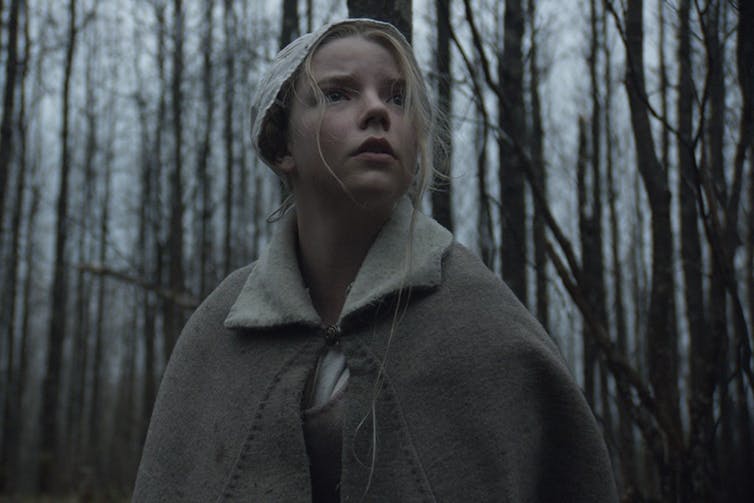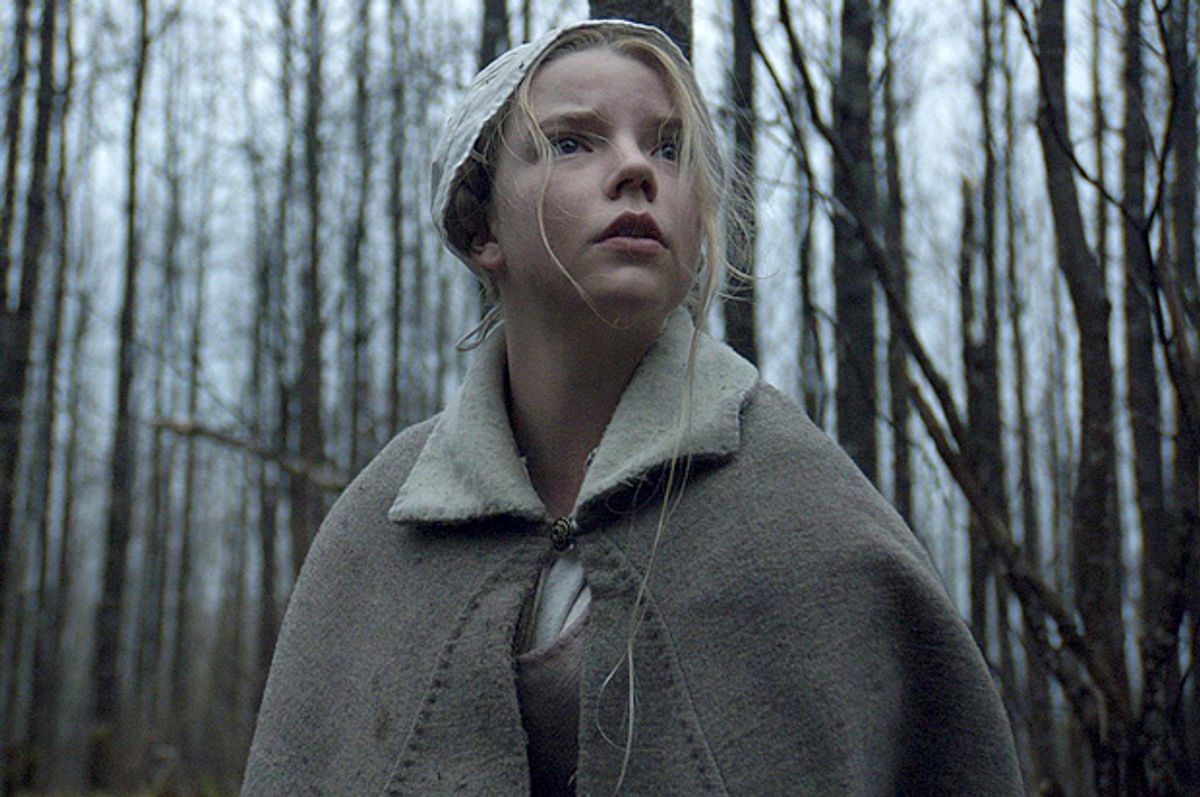Popular culture and literature has been rife with depictions of New England witchcraft for years. Perennial Halloween favourites include Disney’s "Hocus Pocus," John Updike’s "The Witches of Eastwick," "Practical Magic" and Arthur Miller’s play, "The Crucible," which was also made into a movie starring Daniel Day-Lewis and Winona Ryder.
All of these movies are entertaining, but none of them are supposed to be scary, or very historical, although "The Crucible" comes closest. The story is suspenseful and Miller researched the notorious Salem Witch Trials to interrogate what he called “a paranoid situation.” When Miller staged the play in 1953, that situation was the Red Scare and McCarthyism.
By 1996, when "The Crucible" appeared as a film, Miller told The New York Times he had “immense confidence in the applicability of the play to almost any time, the reason being it’s dealing with a paranoid situation … that doesn’t depend on any particular political or sociological development. I wrote it blind to the world. The enemy is within, and within stays within, and we can’t get out of within. It’s always on the edge of our minds that behind what we see is a nefarious plot.”
Enter Robert Eggers’ indie film, "The Witch" (A24 Films, 2016). The movie chronicles the saga of a Puritan family in the 1630s as they try to carve out an isolated existence after their village exiled them over differing interpretations of the New Testament. Horror soon ensues as children disappear into the woods and the oldest girl, Thomasina, is accused of witchcraft.
Telling any more of the story risks spoiling it. But I will say that by using extensive historical research, Eggers offers the most captivating — and historically accurate — representative of the Puritan imagination I’ve ever seen. And it’s terrifying.
Who were the Puritans?
The Puritans were members of an English Protestant church. They deemed the Protestant Reformation unfinished because English monarchs had supposedly allowed too much religious compromise and inclusion. Steeped in Calvinist doctrine, Puritans sought a morally refined Christianity that eschewed the supposed luxuries of Catholicism and Anglicanism.
The Puritans promoted the absolute sovereignty of God and believed that the best way to attain his favour was through close, intimate relationships that were facilitated through small prayer groups and zealous, evangelical sermons.
In the early decades of the 17th century, Puritans began migrating from England to colonize Massachusetts and Connecticut. As the theologian John Winthrop said in 1630, Puritans hoped to make their settlement a “city upon the hill” and serve as an example of spiritual purity to Europeans back home.
All this, though, was easier said than done. The Puritans struggled against a range of enemies, both internal and external, to establish a colony committed to the worship of God in the emerging British Empire.
Believing themselves to be in a “covenant” with God, Puritans’ religious zeal coloured how they saw the world. Obsessed with demonstrating their religious devotion in the hopes of securing salvation in the afterlife, many Puritans feared that living in the supposed “wilderness” of New England might lead them to spiritual savagery.
As a result, they had a tendency to see the devil everywhere, which led to paranoia over witchcraft during most of the 17th century.
Historians have offered different interpretations of what motivated this paranoia. In her 2003 book, "In the Devil’s Snare," Mary Beth Norton makes a compelling case that trauma from violent conflicts between white settlers and the Abenaki people of Maine underlay accusations of witchcraft in the Salem Witch Trials.
But as Carol Karlsen points out in her now-classic book, "The Devil in the Shape of a Woman," “the story of witchcraft is primarily the story of women.” By making John Proctor, a farmer who was executed for witchcraft, the protagonist, "The Crucible" missed the mark. Witchcraft, Karlsen asserts, “confronts us with ideas about women, with fears about women, with the place of women in society, and with women themselves.”
It’s this Puritanical, fanatical fear of women and witchcraft — as it plays out in the New England wilderness — that "The Witch" captures so brilliantly.
Fear of women
First, there’s the wilderness, shot on location in Kiosk, northeastern Ontario, which Eggers positions as an intimidating character. The film is abundant with images of thick white pine and hemlock forest, dark under a clouded sky.
At the beginning of the movie, William, the patriarch of the family, sees the woods as a place of spiritual salvation. Raising his arms up to the heavens, he proclaims, “What went we out into this wilderness to find? Leaving our country, kindred, our fathers’ houses, we travailed a vast ocean. For what? For the Kingdom of God.”
Quickly, though, the forest becomes a place of wickedness, at least in the family’s imagination. William forbids his children from entering the woods, fearing the evil spirits they believe lurk in it.
Of course, things go wrong. Children, including the family’s oldest son, Caleb, are lured into the trees surrounding the family’s isolated farm. They come back changed, if they come back at all. “There is evil in the wood,” says William by the end.
This follows many Puritans’ own ambivalent relationship to nature. At once a place of spiritual refuge, prominent Puritans, including ministers Increase Mather and his son Cotton, “theorized about the desperate evils of the wilderness,” as the literary critic Richard Slotkin notes in his classic study, "Regeneration through Violence: The Mythology of the American Frontier, 1600-1860s."
The Mathers feared that living near the forest, close to supposedly “heathen” Indigenous peoples, would seduce Christian believers into spiritual degeneracy.
For five years, Eggers culled from this historical record to craft the dialogue for his script. As Eggers told "Vulture," he used collections of Elizabethan witch pamphlets, for instance, to write dialogue for the children when they’re possessed.
“I had to research the vocabulary and understand the grammar structure,” he said. “After that, it was about going through the primary source materials and pulling out sentences and phrases and organizing them in a phrase book for different situations.”
‘Feminism rises to the top’
Perhaps inspired by Karlsen’s book, Eggers’s historical research brought him to the realization that making a movie about Puritan witchcraft would have to be about women.
As a result, the film centres around Thomasina, whose transition from girlhood to womanhood seems to threaten the family’s spiritual purity. For this reason, Thomasina quickly becomes the black sheep of the family and is accused of being a witch by her siblings and her own mother.

(The Witch, A24 Films, 2016)
“Feminism rises to the top,” Eggers says about his film. “In the early modern period, the evil witch (represents) men’s fears and ambivalence and fantasies about female power. And in this super male-dominated society, the evil witch is also women’s fears and ambivalence and fantasies and desire about their own power.”
Women accuse other women of being witches, as happened so prominently in the Salem Witch trials. At the same time, accused women, uncomfortable with whatever power they find themselves able to exercise, particularly if it’s sexual, are left guessing if they are, indeed, bewitched.
As scholars such as Perry Miller, John Demos, Sacvan Bercovitch and Jill Lepore demonstrate, what has proven so fascinating about the Puritans is less what they experienced and more what they perceived.
![]() This is why dramatizing the Puritan imagination, or “nightmare,” as Eggers phrased it, makes for such a fascinating film. With carefully crafted dialogue, stunning visuals and chilling music, akin to what Stanley Kubrick used for "The Shining," "The Witch" is able to capture the Puritan nightmare in a way the best historical scholarship cannot.
This is why dramatizing the Puritan imagination, or “nightmare,” as Eggers phrased it, makes for such a fascinating film. With carefully crafted dialogue, stunning visuals and chilling music, akin to what Stanley Kubrick used for "The Shining," "The Witch" is able to capture the Puritan nightmare in a way the best historical scholarship cannot.
Melissa J. Gismondi, Lecturer in Women, Gender and Sexuality, University of Virginia



Shares